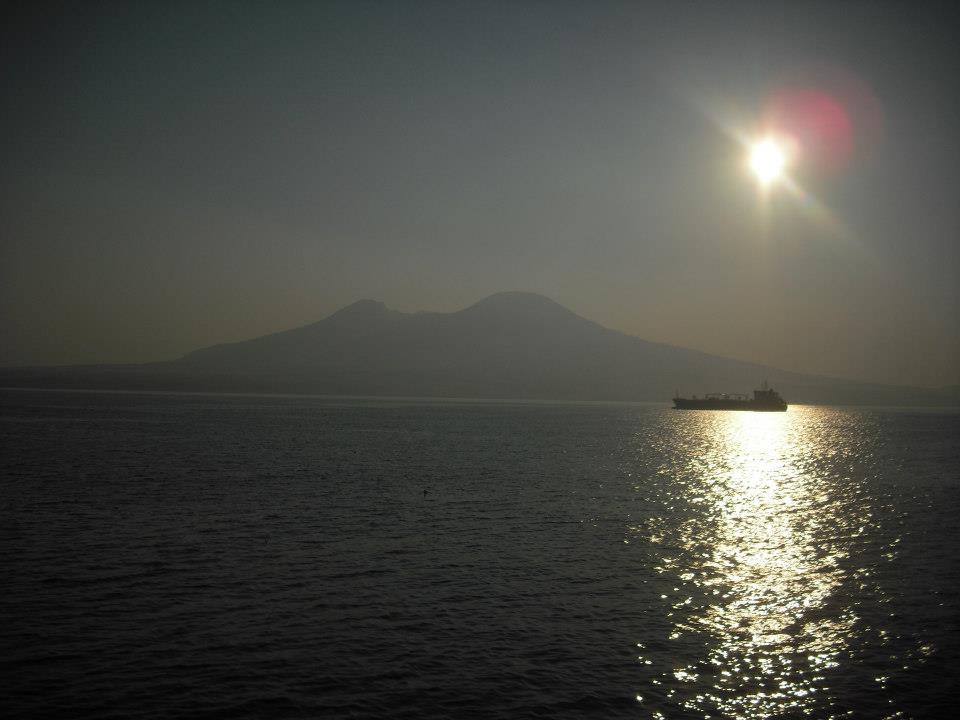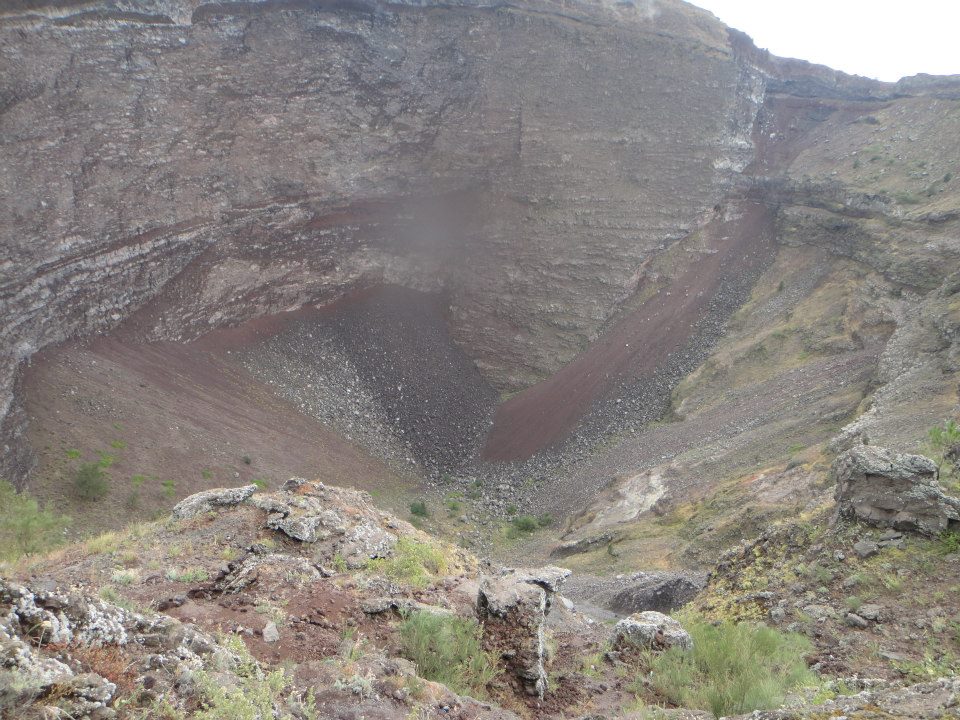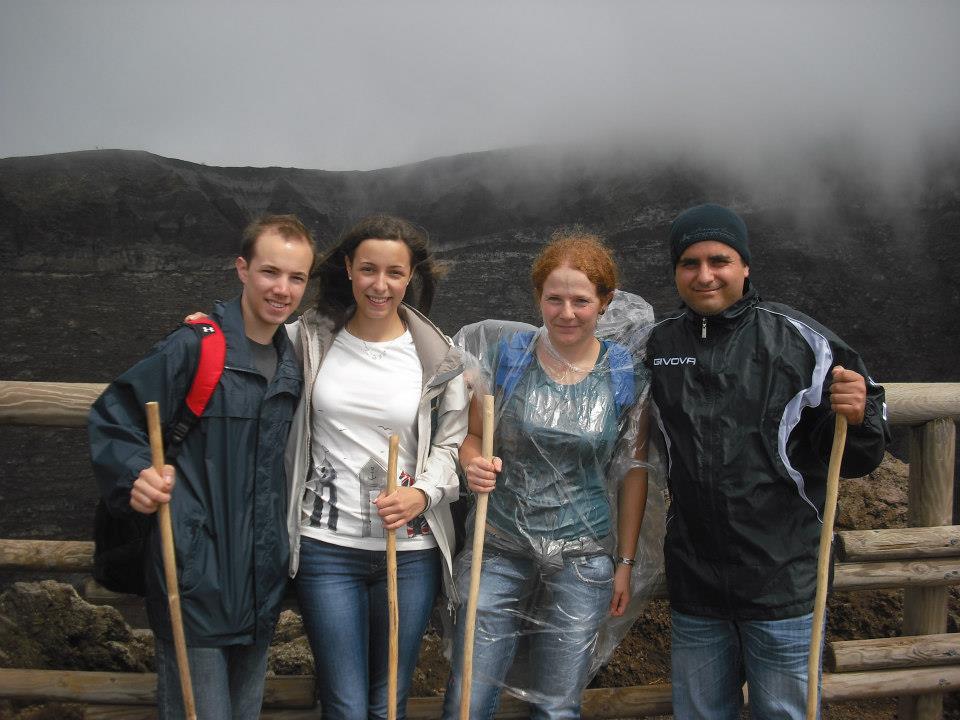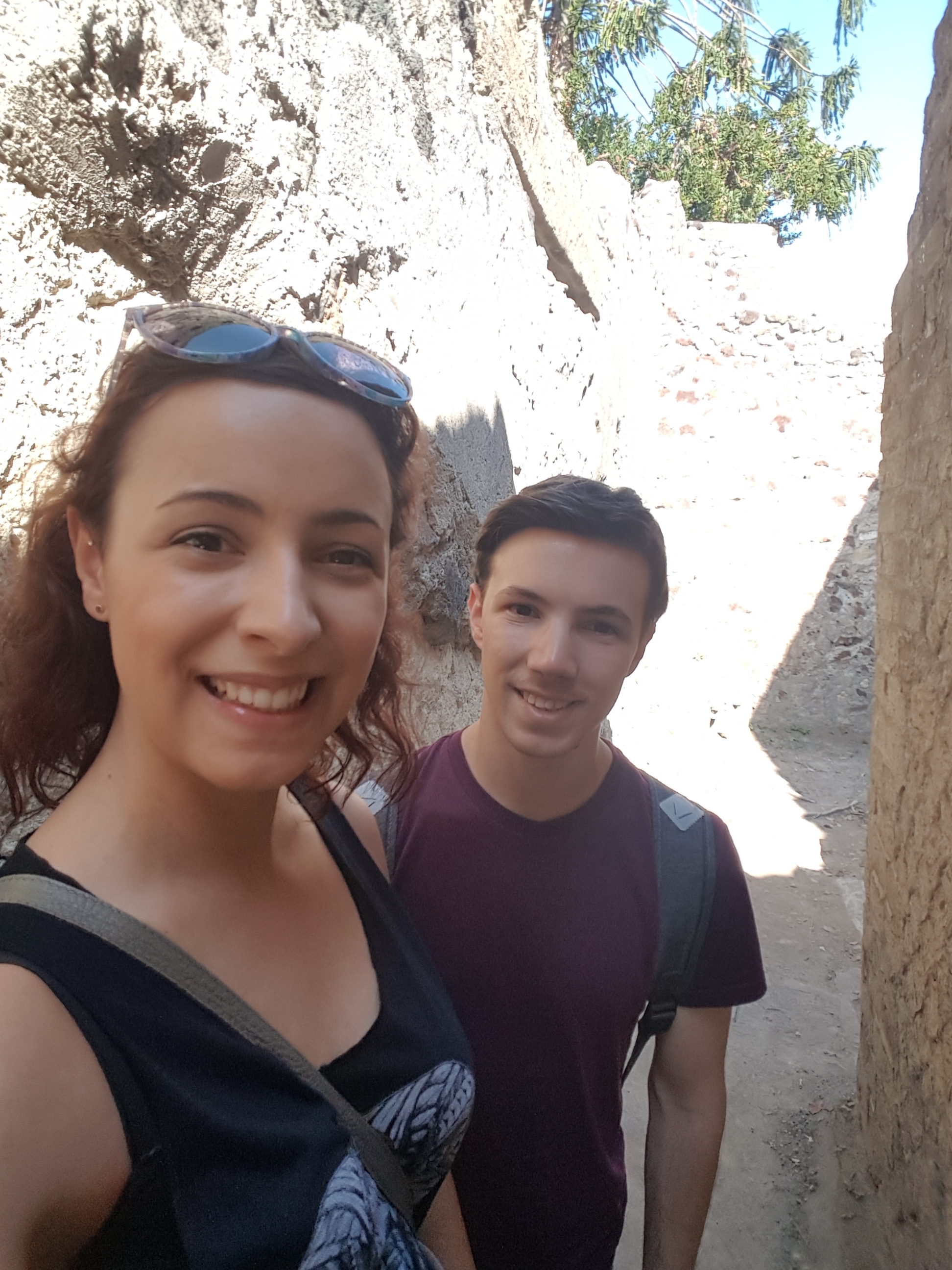Have you visited Naples or the surrounding area before? It is a very special place for me. Not only is it overflowing with history, culture, great food and loads of things to do, but it is also where my grandparents come from and where we have a lot of family heritage.
Bellona is my Grandfather’s home town. It lies about 14 kilometres from Caserta and about 35 kilometres North of Naples, in the Campania region of Italy. My Grandad migrated to Wales after the war to settle in Cardiff in the 1950s, and this is where he met my Grandmother, who turned out to be from an Italian village close to Bellona too. It amazes me how these things happen… It’s a small world isn’t it!
Despite having visited Italy numerous times in the past, I have mainly explored the North of the country. Areas like Venice, Florence, Pisa, the Italian lakes, the Alps and Parma (where more of our family still live). But back in 2012, I visited Bellona in the South for the first time, where I stayed with my Auntie – our very knowledgeable personal tour guide!
I went along with a wish-list of things to do and see and I achieved most of it, only to come away with another to-do-list for my next visit. There was so much more to experience in the area than I had first realised and I’ve been keen to book another trip back to Bellona ever since. I’m glad to say that 2017 is the year I finally got to return there and if you ever visit the area around Naples, this is my personal guide of all the best bits to squeeze into your trip:
The volcanic landscape
The area surrounding Naples is known for its volcanic and tectonic activity. In fact, my aunty told us that she once downloaded an app which notified her of earthquakes in the area. However, she soon deleted the app because small earthquakes were happening every minute and it was notifying her too frequently! It is not surprising that there is so much tectonic activity in the area though, considering the amount of dormant and active volcanoes nearby.

Naples lies at the foot of Mount Vesuvius, one of the most closely monitored volcanoes in the world. Due to it’s catastrophic and explosive eruptions in the past, as well as its proximity to the densely populated city of Naples and the huge population living in its shadow, it is considered one of the most dangerous volcanoes on earth. This means that it is monitored 24/7 for even the slightest sign of volcanic activity, as an eruption could be devastating. Despite it’s frightening reputation, a hike to the top of the Vesuvius is well worth it. On a clear day, you can catch breath-taking views across the Bay of Naples and once at the summit, you can really appreciate the vast size of the volcanic crater:

However, I can’t help noticing that the peak of the volcano is almost constantly shrouded by a mysterious cloud – even when there are no other clouds in the sky!! The day we hiked to the summit was one of those cloudy days, which certainly added to the mystery of the volcano:

However, Mount Vesuvius is not the only volcanic feature in the area. In fact, Campi Flegrei (The Phlegraean Fields) – an area known as the burning fields – is actually far more dangerous than Vesuvius. Campi Flegrei is known as a “super volcano” and it covers a huge area to the west of Naples with 24 volcanic craters within it. This area is not monitored anywhere near as much as Vesuvius, yet if it were to erupt, it would be far more catastrophic.
Campi Flegrei is also much more active than Vesuvius, with hydrothermal activity in the area and fumaroles emitting volcanic gases and steam at the Solfatara site, which was unfortunately closed due to a recent tragedy there. However, I have heard stories about Solfatara from my grandad, who told me of two grottos (the man’s grotto and the dog’s grotto), where the volcanic gases mean that people can enter and breathe in the one cave, but only dogs can enter and breathe the other. We managed to catch a glimpse of Solfatara from above:
The ancient archaeological ruins
In the shadow of Mount Vesuvius you will find the ruins of many towns and settlements destroyed by the infamous eruption of AD 79. It is difficult to visit the area of Naples without being tempted to explore the ancient ruins of Pompeii and Herculaneum. Pompeii is the most famous settlement destroyed by the catastrophic eruption of Vesuvius in AD 79, but it is by no means the only ancient city to be explored today. Visiting Pompeii was like taking a step back in time, with the town preserved as it was beneath a layer of ash and lava when the volcano erupted.

We visited Pompeii on a cloudy day, which really added atmosphere as we explored the cobbled streets and homes and shops that have survived the centuries. The weather was a blessing in disguise, as Pompeii is renowned for being packed with tourists yet when we visited and the rain began, the ancient streets soon became deserted, allowing us to explore to our heart’s content. I studied ancient history during part of my time at university and visiting the ruins here helped me to really imagine what life would have been like in Pompeii hundreds of years ago. It was fascinating and breath-taking at the same time!

Herculaneum, on the other hand, was preserved even better than Pompeii. The pyroclastic cloud of gases and ashes from Vesuvius engulfed the settlement, offering a snap-shot of life in AD 79. Herculaneum is a lesser known site with fewer tourists filling the streets in comparison to Pompeii and the archaeological site of Herculaneum is smaller and easier to explore in a day. So this time around, we decided to take a trip to Herculaneum. It was once a wealthier town than Pompeii, which is evident in the elaborate paintings and detailed mosaics that have survived to this day. We were stunned to even see the remains of burnt wooden beams, stairs and doors in the villas too! The amazing thing about Herculaneum is that only a fraction of this coastal city has been uncovered and it remains unknown as to how many villas, homes and impressive buildings are still buried beneath the modern town of Herculaneum.
Although visiting Pompeii and Herculaneum is fascinating and not to be missed when you’re near Naples, it is also a sobering experience. The story of how these towns were tragically destroyed in an instant is truly shocking and sad. Pompeii is famous for the plaster casts depicting the inhabitants who were covered by the volcanic ash and Herculaneum still features the remains of 300 skeletons in the boat houses on the ancient beach where they tried to escape from the eruption. It is hard not to imagine the fear they felt and not to be moved by seeing this. It is also unnerving to consider that even today, with the huge amount of surveillance on Mount Vesuvius, people living in the regions of Pompeii and Herculaneum only have around 90 seconds to escape if the volcano erupts and the vast population of Naples has only minutes to evacuate too. As much as I love the area, I’m not sure I could live there knowing that!

Cuma:
Aside from the settlements destroyed by the eruption of Vesuvius, there are also other ancient Greek and Roman towns to be explored in the region, such as Cuma. I had never heard of this place before, but I was lucky to have a great tour guide showing me the lesser-known sights. Cuma is an archaeological site that was originally founded by the ancient Greeks and is still undergoing excavations to uncover more of the site today.

Following on from its Greek founders, the Romans then added to the settlement. It was such an interesting place to explore, with the cave of Sibyl (the oracle) dug into the rocks, tunnels created to transport ships to the sea, and the ruins of the Temple of Apollo, the acropolis and more. If you enjoy ancient history and archaeology, I would definitely recommend a visit here too!
I have visited several countries with volcanic activity before, including the Azores and Iceland. As beautiful as these other places are (I love them both), I don’t think any of them have the history and archaeology that Naples boasts! Italy is a country that’s bursting at the seams with culture and if you haven’t visited yet, Naples is a great place to start exploring!
Keep an eye out for the next blog “Naples in a nutshell: Part 2” COMING SOON!!

Leave a reply to Jay Waldrom Cancel reply